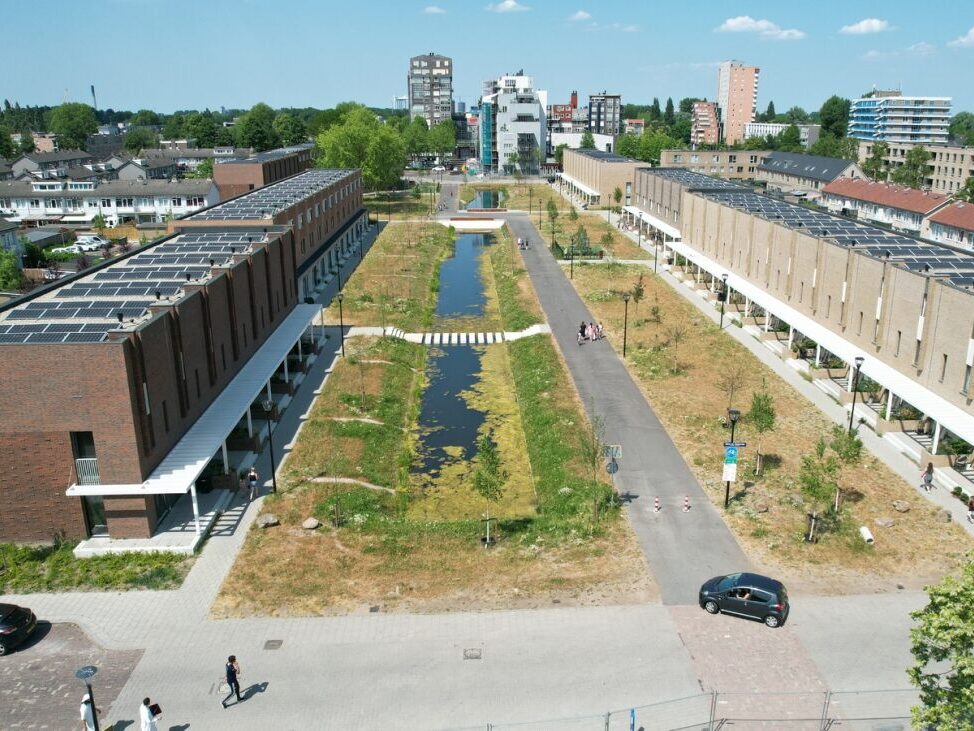All of Wielwijk Meets: Citizen Scientists in Action
By: Plonie Willockx
Translated from the original publication in Wielwijk Ahoy
In conversation with Mr Marco Aarts, citizen scientist.
The Tromp Gardens are new and Wielwijk Park is changing. The municipality’s goal is to make the neighbourhood greener and healthier to protect residents against climate change. Measurements are needed to check the effect of the changes – after all, measuring is knowing. Under the leadership of Buurtbinders, measurements are being carried out by 27 enthusiastic, committed citizen scientists in the project, starting on May 10, 2023: All of Wielwijk Meets.

Mapping the measurements is what makes Mr. Aarts enthusiastic. What are the facts? In his professional life, he worked in the financial sector and therefore has a lot of experience in dealing with numbers. For this project, Mr. Aarts is concerned with water quality and temperature measurements. Is it actually the case that trees ensure the temperature drops? Does running water really provide cooling?
The meetings with the participating citizen scientists are very positive. Mr. Aarts has been living in Wielwijk for eight years after having first lived in Dordts Hout (a part of Wielwijk unknown to many). The gentleman enjoys living in an apartment with a view over the park where the neighbours are watching out for each other. The neighbourhood is lively and all sorts of things are happening; because of daily walks with his dog, sometimes late in the evening, Mr. Aarts has a good idea of the ups and downs of the neighbourhood. Although it is pleasant to live in, there are a number of caveats. Especially now that he is an active citizen scientist, several things stand out, says Mr. Aarts.
Take the trees on the A.H. Trompweg – after removing existing trees, large trees were supposed to be put back. Unfortunately, this did not happen. The remaining trees are too young and small to provide protection for small birds, who now stay away because they would be targeted by large birds of the same species. It is a loss to the community not to hear and see small birds, and Mr. Aarts hopes that these species will return as the new trees grow, which is also important for biodiversity.
Last year, new seeds did not emerge as usual. Seeds, Mr. Aarts emphasises, are key for biodiversity as they strengthen local flora and also support fauna such as bees and other pollinators. The reason for this change was the drought, but in this time of climate change with intensely hot, dry and wet periods, it is important to respond to this.
It is also important that the canals start to flow not only for cooling, but also to keep the water clean. Mr. Aarts says there is a lot of dirt on Trompweg and in a short time, not much may be left of the beautifully landscaped environment. There must be a good plan for maintenance.
This also applies, for example, to the waste bins in the Tromp Gardens. Overflowing, what falls out is really not picked up and put back in the trash. Mr. Aarts stresses that care must be taken to ensure that the beautiful plan of the Tromp Gardens and the Wielwijk Park does not deteriorate in a short time.
Mr. Aarts will certainly continue with the measurements as a citizen scientist. Together with his fellow citizen scientists, he hopes to put the Project: All of Wielwijk Meets on the map. It will certainly take years of observation to get a good picture of what causes climate change, what the consequences are for Wielwijk, and how to respond to the development plans in the neighbourhood.
Curious to learn more about the intersection between citizens science and climate adaptation? Get in touch!
